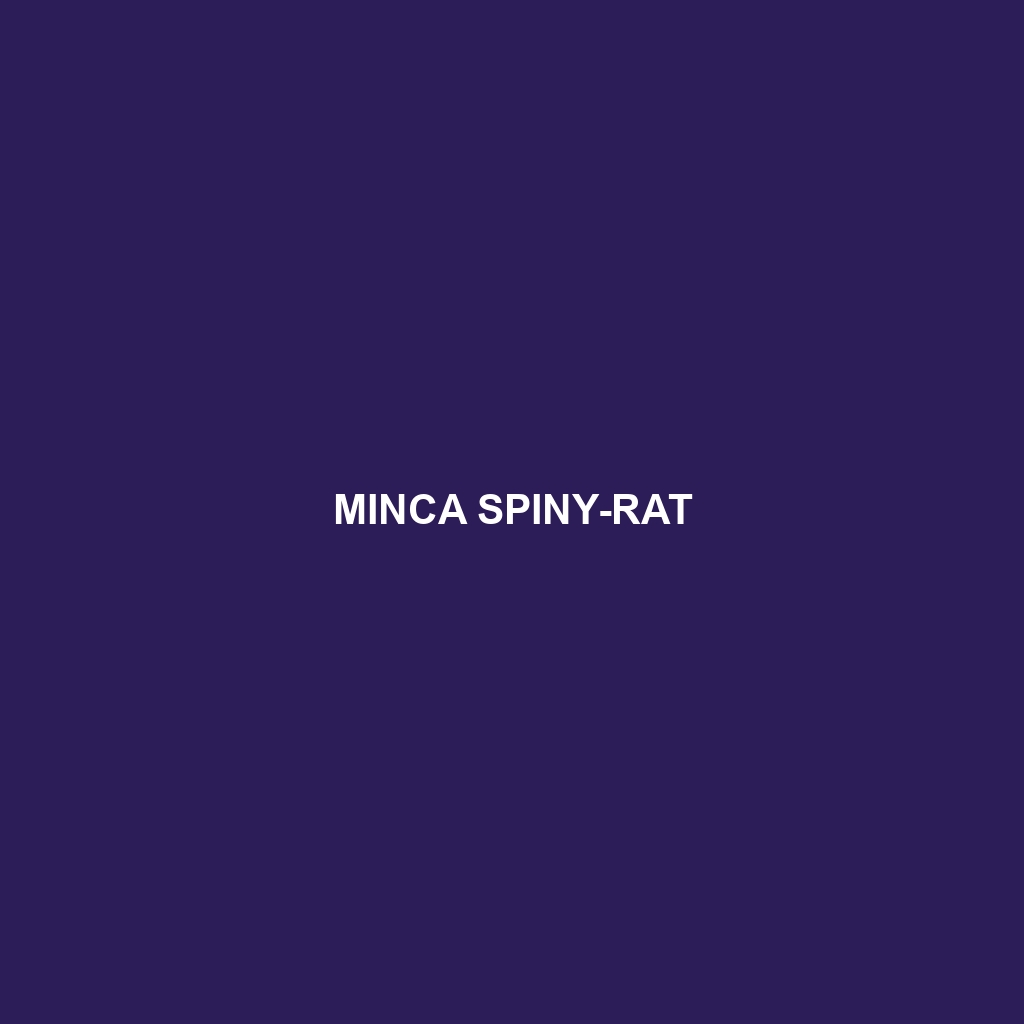Minca Spiny-Rat (Scientific Name: )
Common Name: Minca Spiny-rat
Scientific Name:
Habitat
The Minca Spiny-rat is primarily found in the lush, montane forest regions of the Sierra Nevada de Santa Marta mountain range in Colombia. This species prefers humid tropical environments, thriving in areas with dense underbrush and ample leaf litter, providing abundant cover and foraging opportunities.
Physical Characteristics
Minca Spiny-rats are medium-sized rodents, typically measuring between 25 to 40 cm in length, excluding the tail. They possess a distinct spiny fur coat that is primarily gray or brown, providing camouflage against their forest habitat. Their elongated bodies and large, rounded ears are notable traits, along with their sharp, protruding spines that give them a unique appearance among the rodent family.
Behavior
The behavior of the Minca Spiny-rat is predominantly nocturnal, making it an active forager during the night. They are known to be solitary creatures but may exhibit social behaviors during breeding season. Their ability to climb trees allows them to escape predators and search for food in higher vegetation. Furthermore, they engage in a variety of vocalizations, especially when threatened.
Diet
Minca Spiny-rats have a herbivorous diet, primarily consuming fruits, seeds, and roots found within their forest environment. They are also known to forage on fallen leaves and other plant materials. This diverse diet not only sustains them but also plays a crucial role in the dispersal of seeds, aiding in forest regeneration.
Reproduction
Reproductive habits of the Minca Spiny-rat are not thoroughly documented; however, they are believed to breed year-round, with peaks during the rainy seasons when food availability is higher. The gestation period is thought to last around 30 days, typically resulting in 2-4 offspring per litter. Minca Spiny-rats exhibit maternal care, with mothers nurturing their young until they are independent.
Conservation Status
The current conservation status of the Minca Spiny-rat is listed as endangered due to habitat loss and fragmentation. Human activities such as deforestation and agricultural expansion have significantly impacted their natural habitat, leading to declines in their population density.
Interesting Facts
Minca Spiny-rats are unique not just for their appearance but also for their role in local folklore among indigenous communities. Additionally, their distinctive spiny fur serves as a natural defense mechanism against predators, deterring many potential threats.
Role in Ecosystem
Within their ecosystem, Minca Spiny-rats play a vital role as seed dispersers, contributing to the biodiversity of their habitat. By foraging on fruits and seeds, they help facilitate plant growth and regeneration, which in turn supports a variety of other species within the forest ecosystem.
Make sure to replace “ with the actual scientific name of the Minca Spiny-rat when it’s available. This structured content should enhance SEO and provide an informative overview of the species.
